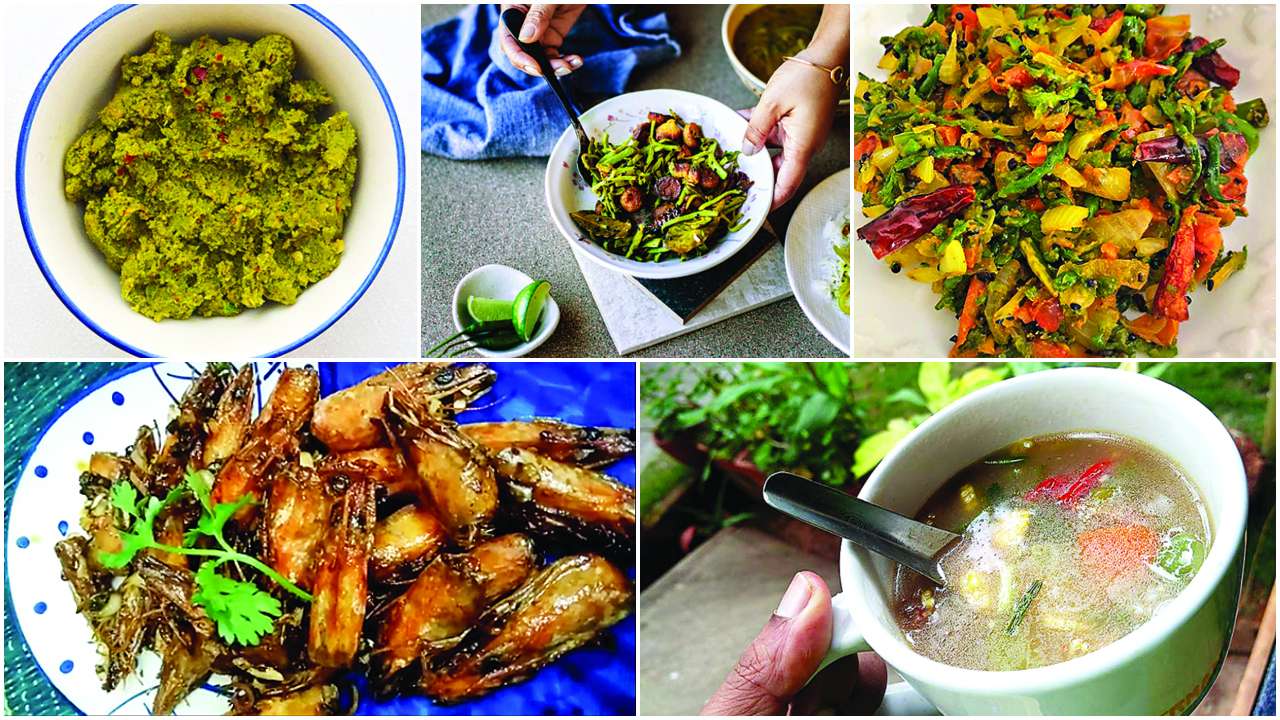
Oil sizzles in a shallow frying pan, the aroma of the Bengali five-spice wafts in the air. The next ingredient, though surprising, is the key to one of the most well-loved delicacies in the cuisine – julienned pieces of bottle gourd (lauki) skin. As the gourd reaches the correct consistency, the cook adds salt and sugar, sprinkles poppy seeds over it. Another minute of stirring, and the dish is ready – lau'er khosha bhaja (fried bottle gourd skin) – to be savoured with dal and rice.
"This is just one of the vegetable skins that we cook," explains 30-year-old Pinjala Kundu, who loves to make experimental dishes. This particular dish made from scrap, is a hand-me-down recipe in the family. "We also make a paste out of cauliflower leaves to eat with dal and rice. You simply mash it, add chilly, garlic and salt, then give it a stir on the gas. Add in a bit of sugar, and you're done." She could be onto what food experts say is the trend of the year: creating marvellous dishes from skins, and other parts of food we'd otherwise throw away.
Leaves, stems, flowers, parts of fish and many other cuts of food often find their way into the dustbin thanks to the cook's ignorance of their nutritional value, and the simple fact that they can be eaten. "Traditionally, Indians are used to eating all parts of a plant, since these would grow in their backyards," says food blogger and author Rushina Munshaw Ghildiyal. "During different times of the year, the flower or the fruit or the stem would be the part consumed. In Bengali cuisine, you cook all parts of a banana tree – root, stem, flower and fruit. In Assam, they make a dish known as khar, which is made largely out of parts of food that you would otherwise throw away. The white of the watermelon skin can be used to make dosa."
It is this philosophy that led Mohit Balachandran, head of SodaBottleOpenerWalla, a popular chain of pubs in Mumbai, to open The Ugly Food Project, an online platform where members share recipes of dishes made from ingredients that are thrown away or not eaten. For instance, Balachandran points out that millet, which is usually used in Northern parts of India as horse feed, can be made into highly nutritious dishes. "Even cuts of meat that are usually put to waste can be cooked. For instance, in Bengali cuisine, they cook fish heads [of big fish like rohu] with their dal. In coastal areas, you also have curry and bhaji with prawn heads."
1 cup rice
1 small fistful poha
1-3 cups watermelon
1/2 cup coconut milk
3-4 methi seeds
Salt to taste
Wash & soak the rice and poha for an hour separately. Drain and set aside.
Add the white part of watermelon in the mixer to the drained poha, rice and coconut milk (preferably freshly extracted)
Add the methi seeds for flavour. Add a small amount of water to the mixture and give it another spin till it reaches a thick batter-like consistency
Keep overnight
Then add salt to taste and mix well
Lay out dosas on a hot dosa tawa and cook till crispy
Serve hot with a chutney of your choice
—Yogesh Pawar
1 dozen prawn heads
Ginger chopped
Red/green chilies chopped
Garlic minced
1 stalk lemongrass
Oil for deep frying
For sauce: 2 tbsp hoisin sauce, 1 tbsp soy sauce 1tsp brown sugar 1 tbsp chilly sauce
Method
Wash the prawn heads thoroughly and take out the sand vein
Drain prawn heads in a colander and toss with salt and cornflour
Deep fry the heads till crisp and set aside
In the same oil, add chopped ginger, garlic, red/green chilies and lemon grass and saute for a minute
Add the fried prawn heads into the mix
Add a mix of soy sauce, brown sugar, hoisin sauce, chilly sauce
Toss until completely coated
Garnish with a sprig of coriander leaf and serve
—Tanmoy Savardekar, The Ugly Food Project